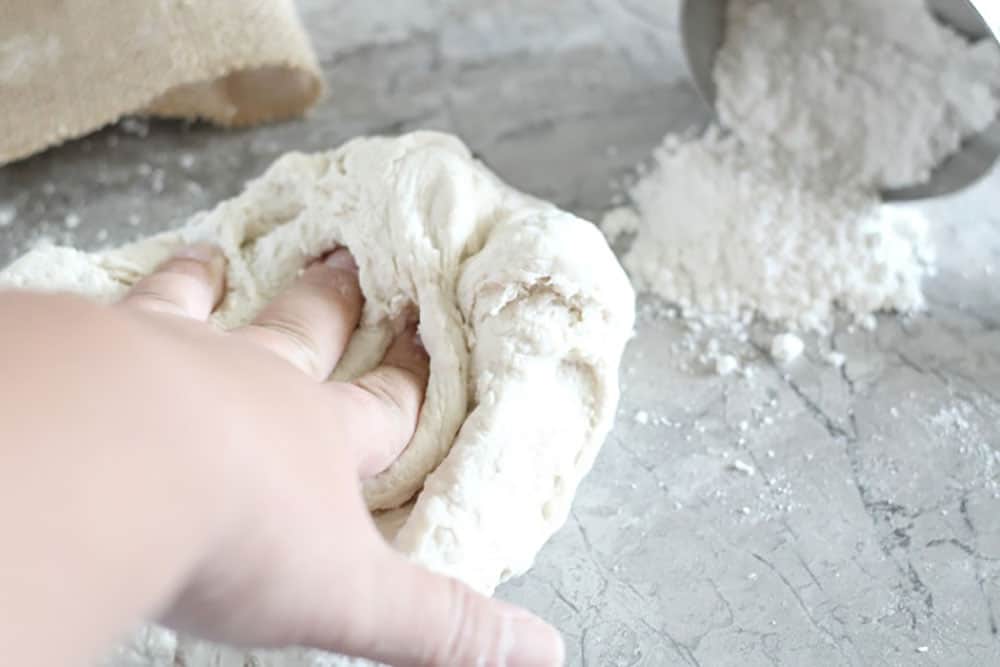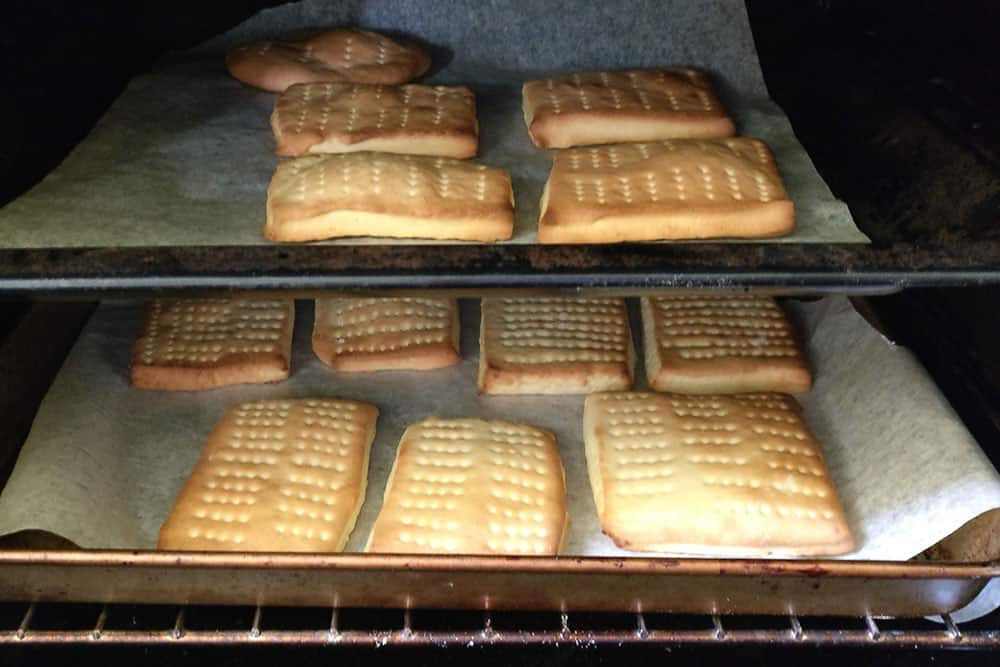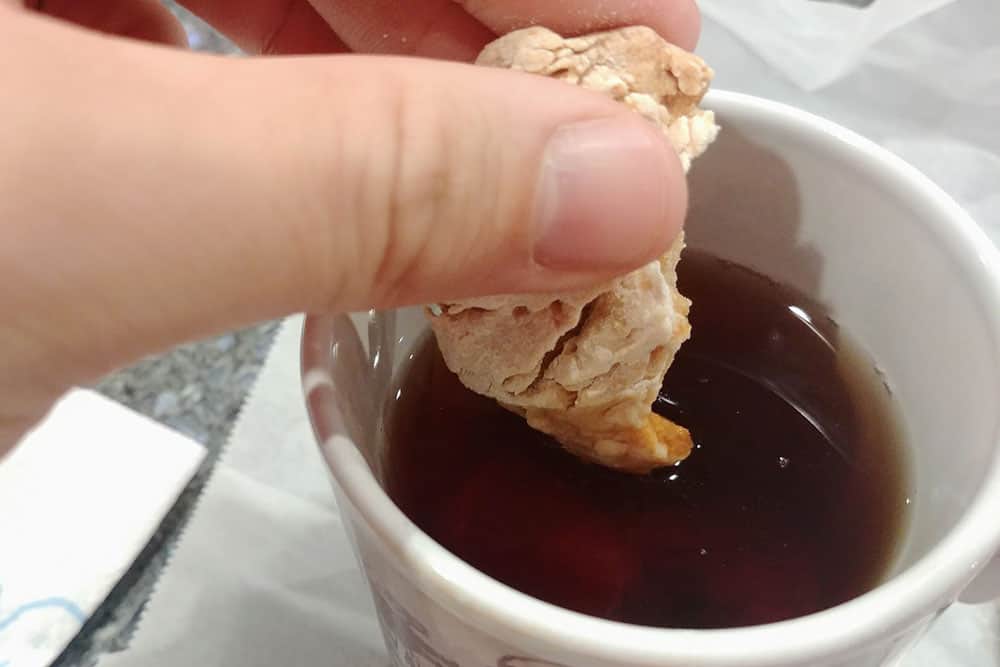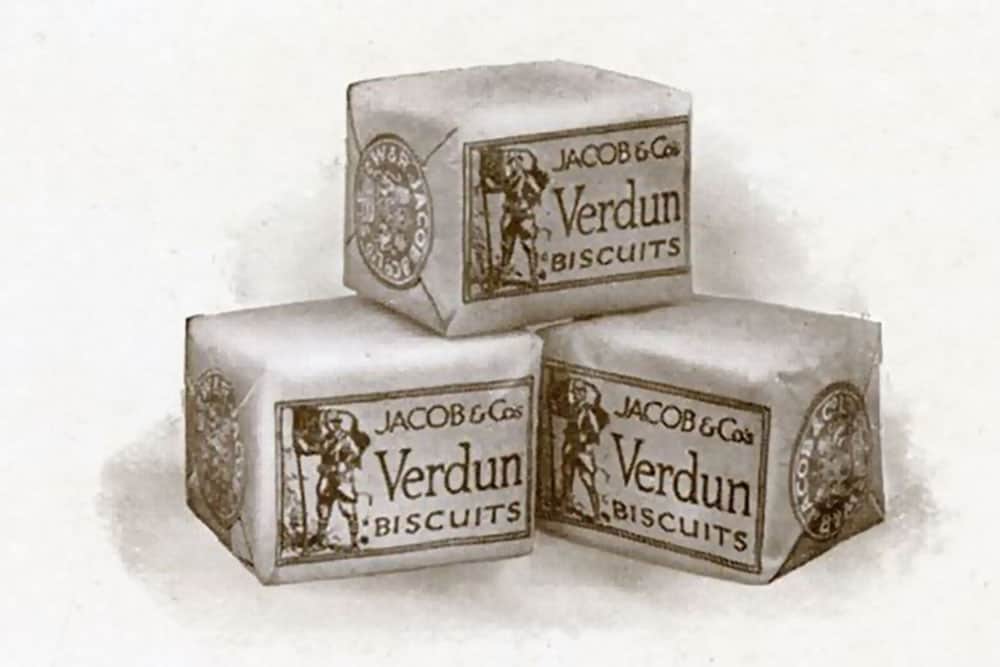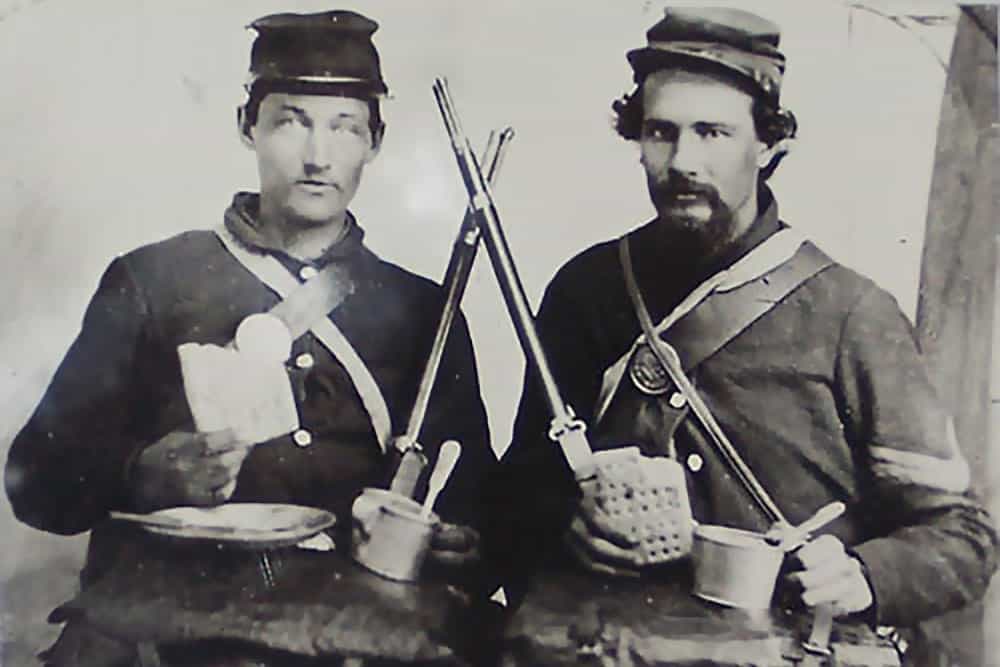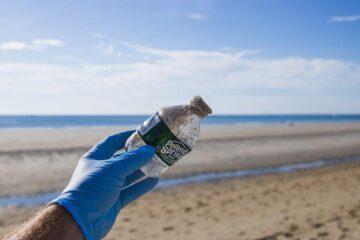When Columbus set sail in 1492 hoping to find a short cut to the Orient by going west his vessels were stocked with, among other things, cheese, honey, raisins, rice, garlic, beans, salt-pork, anchovies, sardines and an early version of what became known as hardtack. Without this “sea biscuit” as it was called at the time, chances are many in Columbus’ crew would have died of starvation before they stumbled ashore in what is today the Bahama’s.
In the centuries since Columbus hardtack only increased in popularity, especially among the world’s armed forces. In fact, a version of hardtack was being issued to Japanese and Korean soldiers late in the 20th century, and word has it the Russian army still includes it in some ration kits.
If you plan on heading into the wild on a hunting or hiking adventure you might want to bring some hardtack with you. If you get lost, snowed in or otherwise stranded for a prolonged period of time hardtack could be the difference between life and death. And, of course, should the apocalypse descend upon us and civil order break down, having a generous supply of hardtack and vitamins on hand could ensure your survival, while others are scouring through trash cans to find scraps.
Below we’re going to provide the traditional recipe for hardtack that was used during the Civil War when, for hundreds of thousands of soldiers, it was quite literally their daily bread.
Traditional Hardtack Recipe
The Civil War occurred more than 150 years ago and the following recipe reflects the simplicity of the times. All you will need as far as ingredients go are:
- 2 cups of flour
- 3/4 cup of water
- 1/2 tablespoon of salt
You will also need the following utensils:
- A mixing bowl
- A rolling pin
- A cutting board
- A cookie sheet
- A reasonably sharp knife
- A fork
Step 1: Mixing the Ingredients
Once you have brought everything together the first step is to mix the ingredients in the mixing bowl. (Before you start mixing, make sure you preheat the oven to 375° Fahrenheit. Also, remove any jewelry from your fingers.)
Combine the flour, salt and about half the water to start with and mix them together, adding more water as you go. The traditional method of mixing is to use your hands, but if that doesn’t work for you for whatever reason, use a stand mixer with a bread hood attachment.
As you mix, keep an eye on the consistency. If you think the dough is too sticky after mixing it for a few minutes (“too sticky” meaning you have a hard time removing it from your hands), then add a bit more flour until the dough easily forms a ball shape, but is not so sticky it won’t come off your fingers.
Roll the Dough
Once the dough is the right consistency form it into a ball, dust your cutting board with some flour and place the ball down on the board. If you don’t have a big enough cutting board, use a clean table top or, if it is big enough, your cookie sheet.
Roll the dough out until it is a uniform 1/4 of an inch thick (give or take). If you don’t have a rolling pin you can use a large empty bottle as long as it has smooth sides, or you can spread the dough out by hand. The shape isn’t terribly important, though a square shape is usually more convenient because it lends itself to cutting the dough into squares.
Cut the Dough
Hardtack isn’t pizza so you’ll have to cut the dough before you bake it. This is what your reasonably sharp knife is for. If your knife is too dull it will have a hard time cutting clean lines through the thick dough.
Although the size of hardtack “biscuits” has varied considerably over time we would recommend you cut yours into the size of a standard Saltine. This size is easier to manage and lends itself to trouble-free long-term storage, in case you’re making your hardtack in anticipation of the apocalypse. Keep in mind that hardtack is, in fact, hard. So if you plan on softening it up later by dunking it into your coffee the biscuit will need to fit in the cup. Another reason to keep it reasonably small.
Poke the Dough
Now that you have your cracker-sized hardtack biscuit dough laid out on the cookie sheet you’ll need to do this one more thing before popping it in the oven. Use your fork and poke several rows of holes in each square.
The holes have a few important purposes. First, they will help the biscuits bake evenly. Second, they will allow moisture to escape during baking, which is important for their long term viability. And third, the holes can act as fault lines. In other words, it is easier to break the biscuit into pieces along the line of holes than it would be if there were no holes there.
Some purists might suggest that in order for your hardtack to be Civil War authentic you need to use a nail to poke the holes. Make of that what you will.
Bake the Hardtack
At this point, all that’s left is to slip your wannabe hardtack biscuits into the oven. You preheated the oven already as we suggested in step 1 so just slide the tray in and let them bake for approximately 30 minutes (give or take). You will know they are done when they start to turn brown on the surface. You’re not looking for a dark chocolate type of brown, just a light brown or dark tan. Whatever you do, don’t let them burn.
After removing them from the oven let them sit as long as necessary to get completely cool. Packing them away in a container or ziplock bag when they are still warm will result in moisture being trapped within the biscuits. This moisture will shorten the shelf life of the hardtack, perhaps significantly. If you are unsure if the hardtack is completely cool, just leave it a bit longer. Better safe than sorry.
Storing Your Hardtack
When properly cooked and stored hardtack can last for years. In fact, there are extant pieces of hardtack in various museums that have survived since the Civil War. Is it still edible after so many years? That’s open to debate. There are those who claim to have eaten samples of hardtack from the 19th century. But whether they actually did, or simply ate something baked recently and made to look old, is uncertain.
What is certain is that if cooked and stored properly your hardtack will be good for several years, minimum. You may find 20 years down the line when the long wait for the apocalypse is finally over that the hardtack you bake tomorrow will still be viable.
If you plan on storing your hardtack rather than taking it right out into the wilderness with you, you’ll want to use mylar storage bags along with desiccants (1) that will soak up any moisture that may have been trapped in the biscuits. In a pinch you can use standard Ziplock bags along with those desiccants. Just do your best to remove as much air as possible before sealing the bag. Once the biscuits are bagged, put them in a Tupperware or metal box to keep them safe from mice and bugs.
Bagging and boxing the hardtack is only half the battle. The other half is making sure you place the Tupperware or metal container in a dry, cool place. Where that might be is up to you to decide. But if you store hardtack in a damp basement or a hot pantry you’ll dramatically reduce its shelf life.
Upscaling Your Hardtack
“Tipping my hat to tradition is all very well and good” you say. “But I live in the 21st century and shouldn’t have to eat the same minimalist crap my great, great, great, great grandfather ate.” Fair enough. Fortunately there are things you can add to hardtack that will increase both the flavor and nutritional content, although some of them may chip away at the shelf life.
For instance, some people are fond of adding a bit of sugar to their hardtack dough to make the final product more appealing. Others will add brown sugar. The problem there is brown sugar is fairly moist and this can undermine the shelf life of the hardtack. Others will add a bit of coconut oil, or other refined oils that have a long shelf life. Also, if you are lactose intolerant you can consider using dried buttermilk powder instead of white flour.
Obviously, if you plan on taking the hardtack out with you and eating it within days you have a lot of freedom about what you can add. If, however, you plan on keeping it until the day of reckoning arrives, adding any fancy-pants ingredients will curtail its shelf life and defeat the purpose of making it.
Eating Hardtack
So the zombies are in the streets and civil society has broken down. Supermarkets have been closed for weeks and your neighbors have either joined the undead or are relying on the spare tires they cultivated during the corona lockdown to tide them over. Great! The perfect opportunity to dust off the hardtack and settle in for the long haul.
Breaking out the hardtack reserves begs one particularly important question though: How do you eat this stuff? It’s hard as a rock after all, and there may or may not be dentists open to repair the teeth you might crack biting directly into it.
The best, most common way to eat hardtack is by dunking it in a (preferably) hot beverage. Let’s say you just made your morning coffee and you’re sitting near the kitchen window at sunrise watching squirrels attack zombies on your lawn. That’s the perfect time to break out a hardtack biscuit and start dunking.
Seriously though, hardtack is best eaten with hot coffee, tea, soup, or broth. Or, if you have a hammer or some other device to smash it with, you can grind it up and mix it with warm milk or hot water and make a kind of porridge or gruel (2). This kind of concoction can actually be surprisingly satisfying if you’re in the mountains on a cold winter morning.
If all else fails and you find yourself short on water or other liquids you can try breaking it up and holding small pieces in your mouth until heat and saliva soften them enough to chew and swallow. Be aware this might take a few minutes though. One reason you didn’t make your hardtack 1/2 an inch thick like some people recommend, after all, is that you knew this day might arrive and you’d have to break it up and eat it “as is”.
Whatever you do, don’t bite down too hard on a piece of raw hardtack. If you do there is a very real possibility you could crack or chip a tooth.
Hardtack History
Unleavened bread has been used for thousands of years as an all-purpose food. It was initially stored away for the winter time or for those years when harvests were poor. It didn’t take long, however, for military leaders to figure out the immense value of this type of foodstuff, and indeed the Roman legions ran, at least in part, on their version of hardtack which they called “bucellatum” (3). A millennium later Crusaders of the 12th century relied on what they called the “biskit of muslin” which used bean flour.
The unrelenting toughness of hardtack made it an ideal food to bring on sea voyages and indeed hardtack became a standard menu item on ships of all nations. As we mentioned at the beginning of this piece, Columbus fed his sailors hardtack. It was also a staple of the British navy throughout their heyday and right up until the introduction of canned goods, which were invented in Napoleonic France (4) and introduced into the British navy in the mid-19th century. After that, hardtack was gradually phased out.
Across the Atlantic Josiah Bent began mass production of what he called “water crackers” in his Massachusetts factory during the late 18th and early 19th century. Commercial ships bound for long voyages out of the port of Boston were typically laden with Bent’s crackers.
Sparked by the discovery of gold at Sutter’s Mill near what is now Sacramento, California in 1848 thousands of east coast men abandoned their homes, their jobs and, in many cases, their families and ventured west in what became known as the California Gold Rush (5). Many of these “49ers” carried with them bags or boxes full of Bent’s water crackers.
A decade later after the Civil War broke out, Bent became a major supplier of hardtack to the Union Army. Josiah Bent’s company was later acquired by what became the National Biscuit Company, which we know today as Nabisco.
Over the years soldiers and others invariably encountered the problem of weevil (6) infestation of their hardtack, which was common if the biscuits had not been stored properly. One solution to this problem was to drop the weevil infested hardtack into hot coffee, wait for the weevil larvae to float to the top and then skim them off with a spoon.
Although weevils are not exactly common pantry pests these days the contemporary hardtack aficionado does need to be careful when storing their hardtack as there are numerous grain and flour beetles that could conceivably take up residence in one’s emergency biscuits.
Hardtack FAQs
Are Saltines a Type of Hardtack?
While the two are related they are not exactly the same thing. Hardtack is a type of unleavened bread or cracker. On the other hand Saltines, and other similar modern crackers, use the basic hardtack recipe as a foundation and then add a bit of yeast (7) to make them fluffier and easier to eat.
Is Hardtack the Same as Pemmican?
If you have never had either you might think hardtack and pemmican (8) are 2 names for the same thing. But the only thing they have in common is that they are both survival foods, prepared in advance, that are intended to provide long-term subsistence for hunters, sailors, soldiers and others who find themselves unable to access more traditional foodstuffs. Hardtack, as we have seen, could be considered a precursor to the modern cracker. While pemmican could be considered a precursor to modern beef jerky.
Just How Hard is Hardtack?
If baked properly hardtack can be just short of rock hard. During the baking and drying process nearly all moisture is removed from the dough, leaving behind a texture that is more reminiscent of concrete than food. Woe unto thee who tries to bite directly into a hardtack biscuit without softening it first.
How Long Will Hardtack Last?
Of all the old fashioned emergency rations (including pemmican) that have survived into the present day hardtack has the longest potential shelf life. If you bake it and store it properly it should last at least 5 years and perhaps considerably longer.
The Minnesota Historical Society for instance has an extant piece of Civil War Hardtack in its collection that is at least 150 years old (9). Is it edible? Well, there is at least one hardy (foolhardy?) soul on youtube who claims to have eaten a 153 year old piece of hardtack and survived. See for yourself in this video.
How Can You Tell If Hardtack Has Gone Bad?
When it comes to long term viability, water and heat are the enemies of food. However, if hardtack is made and stored correctly then it is virtually free of moisture and kept away from heat. Therefore, how long it remains viable is an open question. If you clicked on the video we linked to above you saw a guy who claims to have eaten a 153 year old piece of hardtack.
There are also tales about how, during the Civil War, the military reached deep into its storehouses and brought out surplus hardtack that had been baked for the War of 1812. If true, that means some Civil War combatants were eating 50 year old hardtack.
But back to the question: How do you know if your hardtack has gone bad? Look at it. Is there mold on it? Touch it. Has it gone soft? Break it up. Is it riddled with worms or weevils? (10) Even if any or all of these things are true it is still theoretically possible to eat “stale” hardtack in an emergency situation. Preferably by breaking it up and putting it in boiling water to make gruel. Just be aware you may suffer some unwelcome consequences.
How Long Can A Person Actually Live on Hardtack?
The success of hardtack as a military ration is due to the fact that a person can actually survive for quite a while on only hardtack and water. But of course man does not live on bread alone, (and hardtack is essentially a kind of unleavened bread). At some point the body will require a fuller array of nutrients than hardtack provides. Therefore, if you intend to make hardtack part of your survival rations you should also stock up on vitamin C supplements, or better yet, multivitamins, and take them every day along with your hardtack, to ward off things like scurvy (11).
Can You Buy Hardtack in the Supermarket?
You would have a hard time finding hardtack in your local supermarket, unless you lived in Alaska, where locally produced hardtack occasionally pops up on shelves. However, remember the Bent Company we discussed above? The one that was a major supplier of hardtack to the Union Army during the Civil War and was later acquired by Nabisco? Well, Nabisco sold off the Bent brand about 50 years ago and the once again independent company is still in business, pumping out about 4,000 boxes of hardtack each year. Most of those boxes go to Civil War reenactment organizations, however. But you can still buy them direct from the company’s store if you find yourself in Milton, Mass.
